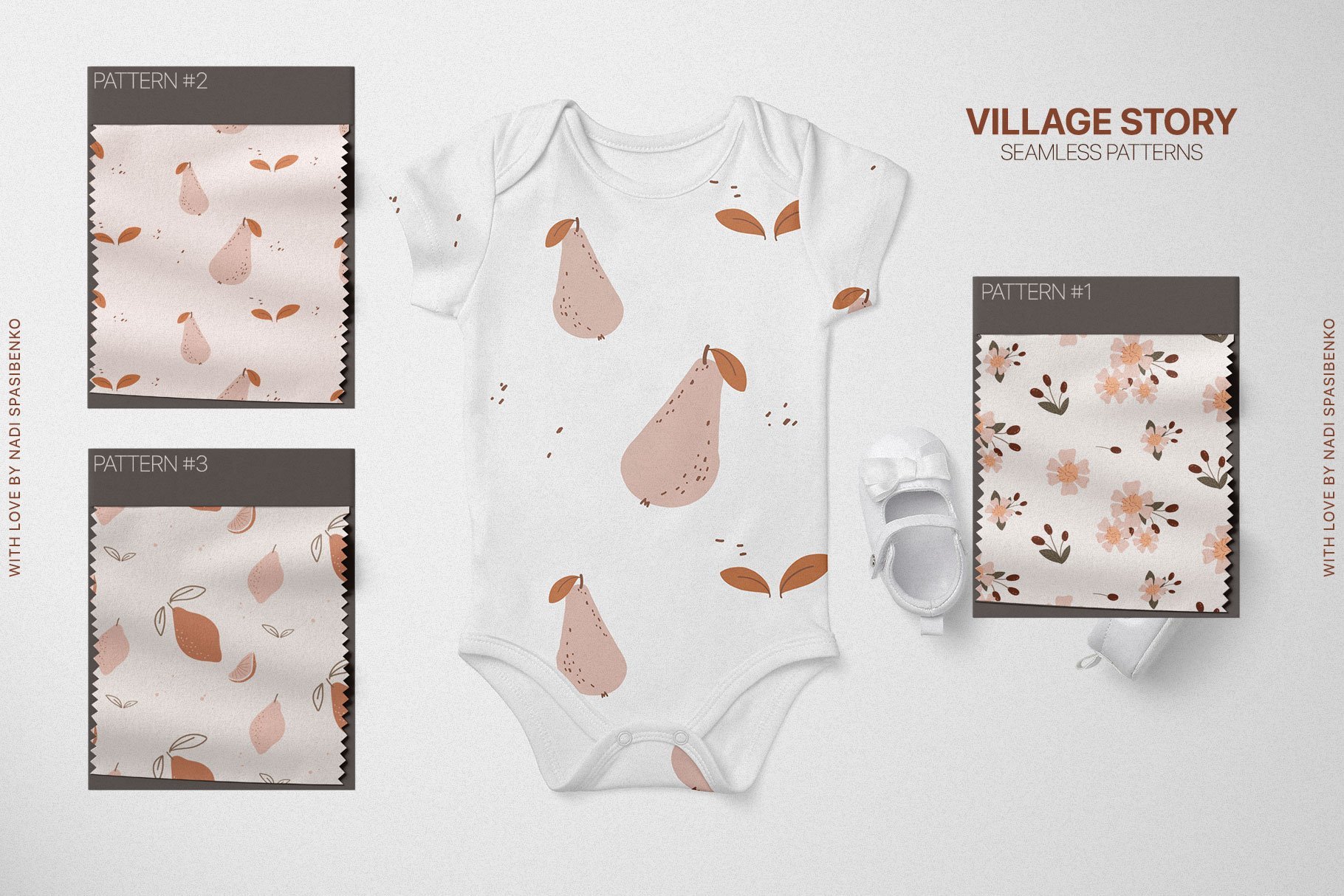Creating a Children's Brand: A Step-by-Step Guide
Creating a children's brand of clothing and accessories can be a fun and rewarding experience, but it also requires a lot of work and planning. Here are the main stages of creating a children's brand:
Research.
Before you start creating your brand, it's important to research the market to see what other children's clothing and accessory brands are out there, and what gaps in the market you can fill. Look at what styles, colors, and themes are popular among children, and consider what age range you want to target.
When researching the market, it's important to look at both local and international competitors. You'll want to pay attention to the products they offer, their target demographics, pricing, and distribution channels. This will give you a good idea of what is currently available in the market and how you can differentiate yourself from existing brands.
You should also take note of what's trending in the children's fashion industry, this can include colors, fabrics, styles, and themes. Look at what kind of clothing and accessories are being worn by children and what styles are popular among parents. This will give you a good idea of what styles and themes to incorporate into your brand.
Another important aspect to consider is the age range of children you want to target. Different age groups have different needs, and you'll want to make sure that your clothing and accessories are appropriate for your target demographic. For example, you may want to create a line of clothing for babies and toddlers, or for older children.
Finally, it's important to consider the gap in the market you can fill. Look for areas where there is a lack of options or where existing products are lacking in quality or style. For example, you could create a line of organic, eco-friendly clothing, or a line of clothing designed specifically for children with sensory sensitivities.
Overall, conducting thorough research is crucial in creating a successful children's brand. It will help you to identify what's currently available in the market and what gaps you can fill, as well as inform your design and marketing efforts.
Design.
Once you have a clear idea of what your brand will be all about, it's time to start designing your clothing and accessories. This can include creating sketches, choosing fabrics, and deciding on colors and patterns.
Designing a children's clothing and accessories line is a creative process that requires a keen understanding of current trends, as well as the preferences of your target demographic.
First, start by creating sketches of your designs. These can be rough sketches, but they should give a clear idea of what your clothing and accessories will look like. This is a great way to experiment with different ideas and to get a sense of what works and what doesn't.
Next, choose the fabrics and materials you want to use for your clothing and accessories. Children's clothing and accessories need to be comfortable, durable and easy to care for, so it's important to choose fabrics that meet these requirements. You'll also want to consider the colors and patterns of your fabrics, as they should complement your designs and appeal to your target demographic.
Colors and patterns play an important role in creating a strong brand identity. You'll want to choose colors and patterns that reflect the theme and style of your brand. If you're targeting a specific age group, keep in mind that different age groups have different preferences for colors and patterns. For example, younger children may prefer bright, bold colors, while older children may prefer more subdued colors and patterns.
Finally, consider the fit and functionality of your designs. Children's clothing and accessories should be designed with comfort and ease of movement in mind. You'll want to make sure that your clothing is easy to put on and take off, and that it allows children to move and play comfortably.
In summary, designing a children's clothing and accessories line requires a combination of creativity and attention to detail. By creating sketches, choosing the right fabrics and colors, and considering the fit and functionality of your designs, you can create a line of clothing and accessories that appeals to your target demographic and stands out in the market.
Prototyping.
After your designs are complete, you will need to create prototypes of your clothing and accessories. This will allow you to test the fit, comfort, and durability of your products.
Once you have completed your designs, the next step is to create prototypes of your clothing and accessories. This is a crucial step in the process, as it allows you to test the fit, comfort, and durability of your products before they go into production.
To create prototypes, you'll need to find a pattern maker or sample maker who can bring your designs to life. The pattern maker will create patterns based on your sketches and designs, and the sample maker will use the patterns to create the prototypes. You can create your prototypes in-house or outsource the work to a contractor, depending on your resources and expertise.
When creating prototypes, it's important to pay attention to the fit and comfort of your clothing and accessories. You'll want to make sure that the prototypes are true to your original designs and that they fit well on different body types. You should also test the prototypes for durability and ease of care. This will help you to identify any issues that may arise during production and make adjustments as needed.
Once you have a set of functional and comfortable prototypes, you can use them for a fitting session with real children. This will give you a chance to see how the clothing and accessories look and feel on real children, and make any necessary adjustments.
It's also important to consider the safety and compliance aspects of your prototypes. You'll want to make sure that your prototypes meet all relevant safety standards, such as ASTM and CPSIA.
In summary, prototyping is an essential step in creating a children's clothing and accessories line. It allows you to test the fit, comfort, and durability of your products before they go into production, and make any necessary adjustments to ensure that your products meet safety and compliance standards, as well as customer expectations.
Sourcing.
Once your prototypes are complete, you will need to find manufacturers who can produce your clothing and accessories at a reasonable cost. This can be a tricky process, and it's important to find a manufacturer who is reliable and produces high-quality products.
Sourcing is an important step in the process of creating a children's clothing and accessories line. It involves finding manufacturers who can produce your clothing and accessories at a reasonable cost, while also ensuring high-quality and reliability.
There are several different ways to find manufacturers for your clothing and accessories line. One way is to attend trade shows and industry events, which allow you to connect with manufacturers and learn about their capabilities and experience. You can also search online for manufacturers and suppliers, or use a sourcing agency that can help you find the right manufacturer for your needs.
When looking for a manufacturer, it's important to consider several factors. These include the manufacturer's experience, reputation, and capabilities. You'll want to make sure that the manufacturer has experience working with the types of fabrics and materials you plan to use and that they have a good reputation for producing high-quality products.
You'll also want to consider the manufacturer's location and capacity. If you're looking for a local manufacturer, it will be easier for you to visit their facility and check on the quality of their work. You'll also want to ensure that the manufacturer has the capacity to produce your clothing and accessories in the quantities you need.
Another important aspect to consider is the manufacturer's certifications and compliance. You'll want to ensure that the manufacturer follows safety and environmental regulations, such as ASTM and CPSIA for children's clothing and accessories, and that they have the necessary certifications to produce your products.
Finally, it's important to establish clear communication and expectations with your manufacturer. You'll want to make sure that they understand your designs, specifications, and delivery schedule, and that they're able to meet your needs and requirements.
In summary, sourcing is a crucial step in creating a children's clothing and accessories line. Finding a reliable and experienced manufacturer who produces high-quality products, follows safety and compliance regulations and is able to meet your needs and expectations is essential for the success of your brand.
Marketing.
To get your brand noticed by potential customers, you will need to come up with a marketing plan. This can include advertising, social media campaigns, and collaborations with other brands or influencers.
Marketing is an essential part of creating a children's clothing and accessories brand. It is the process of promoting and advertising your brand to potential customers, to help increase brand awareness and generate sales.
One of the most effective ways to market your brand is through advertising. You can advertise your brand through various channels such as social media, print and online publications, and television. Advertising allows you to reach a wide audience and to create brand awareness.
Social media is another powerful tool for marketing your brand. Platforms such as Instagram, Facebook, and Twitter allow you to connect with potential customers and to build a community around your brand. You can use social media to share updates, promotions, and behind-the-scenes looks at your brand.
Collaborations with other brands and influencers can also be a great way to market your brand. Partnering with other brands in your industry can help to increase brand awareness and to reach new audiences. Influencer marketing, which is the process of partnering with social media influencers, can also be a powerful tool to reach new audiences and to increase brand awareness.
Another way to market your brand is through events and pop-up shops. Hosting events such as fashion shows, product launches, and pop-up shops can be a great way to showcase your brand and to connect with potential customers.
Finally, it's important to have a strong online presence, such as a website and an e-commerce platform. Your website should be easy to navigate and should provide customers with all the information they need about your brand, such as your story, your collections, and your contact information.
In summary, marketing is an essential part of creating a children's clothing and accessories brand. A well-executed marketing plan that includes advertising, social media, collaborations, events, and a strong online presence can help to increase brand awareness and generate sales.
Distribution.
Finally, you will need to figure out how to get your clothing and accessories into the hands of customers. This can include opening your own store, selling through online retailers, or working with boutiques and department stores to carry your products.
Distribution is the final step in creating a children's clothing and accessories brand. It involves getting your products into the hands of customers, which can be done through various channels.
One way to distribute your products is by opening your own retail store. This allows you to have direct control over the customer experience, and the ability to showcase your entire collection. However, opening a store requires a significant investment in terms of time and money.
Another way to distribute your products is by selling through online retailers. Online retailers such as Amazon and Etsy allow you to reach a wide audience and to sell your products to customers all over the world. However, you will have to compete with other brands, and the fees and commissions charged by the online retailers can be high.
You can also distribute your products through wholesale channels by working with boutiques and department stores. Wholesale distribution allows you to reach a wide audience, but it also requires a significant investment in terms of time and money. You'll need to create a sales team and to develop relationships with buyers at the boutiques and department stores.
You can also distribute your products through pop-up shops, trade shows, and other events. This allows you to connect with customers and to showcase your products in person.
It's important to note that distribution channels can also vary depending on your target market and the size of your brand. For example, if you're targeting a niche market, you may want to focus on a specific distribution channel, such as online retailers, that cater to that market.
In summary, distribution is the final step in creating a children's clothing and accessories brand. There are several ways to distribute your products, including opening your own store, selling through online retailers, working with boutiques and department stores, and participating in pop-up shops and trade shows. The right distribution channel for your brand will depend on your target market and the size of your brand.
In conclusion, creating a children's brand of clothing and accessories is a process that requires research, design, prototyping, sourcing, marketing and distribution. Each step is crucial for the success of the brand. It's important to conduct thorough research to identify gaps in the market and understand current trends and preferences. The design process should consider the fit, comfort and functionality, as well as the aesthetic appeal of the clothing and accessories. The prototypes will help to test the products before going into production. Sourcing should be done with care, looking for manufacturers with a good reputation, experience and compliance certifications. Marketing and distribution are also key elements for the brand to reach the target customer and generate sales. Overall, creating a children's brand requires a combination of creativity, attention to detail, and persistence, but with the right planning, it can be a fun and rewarding experience.
If you like our blog, then you can support us.
Related Articles:







